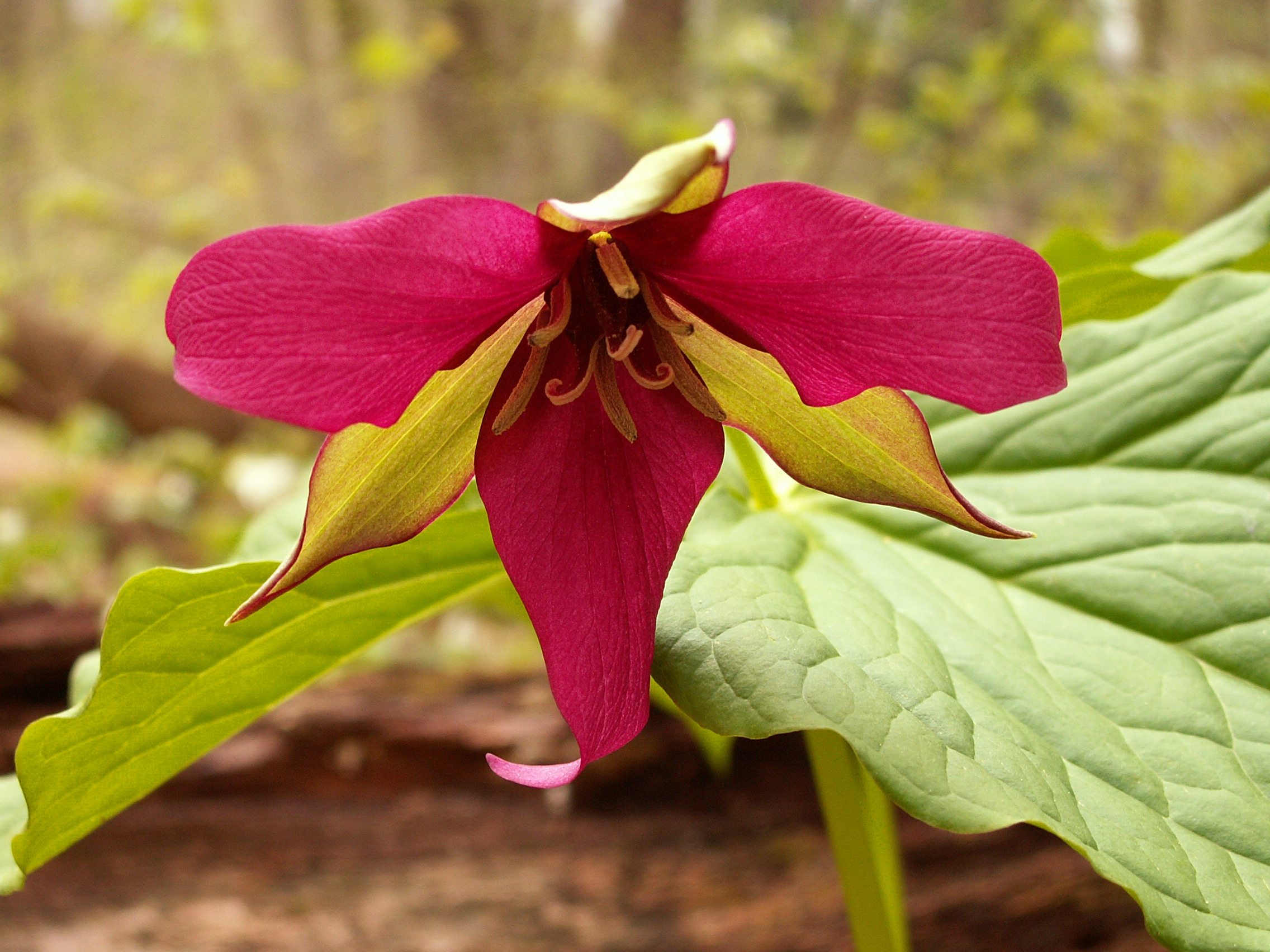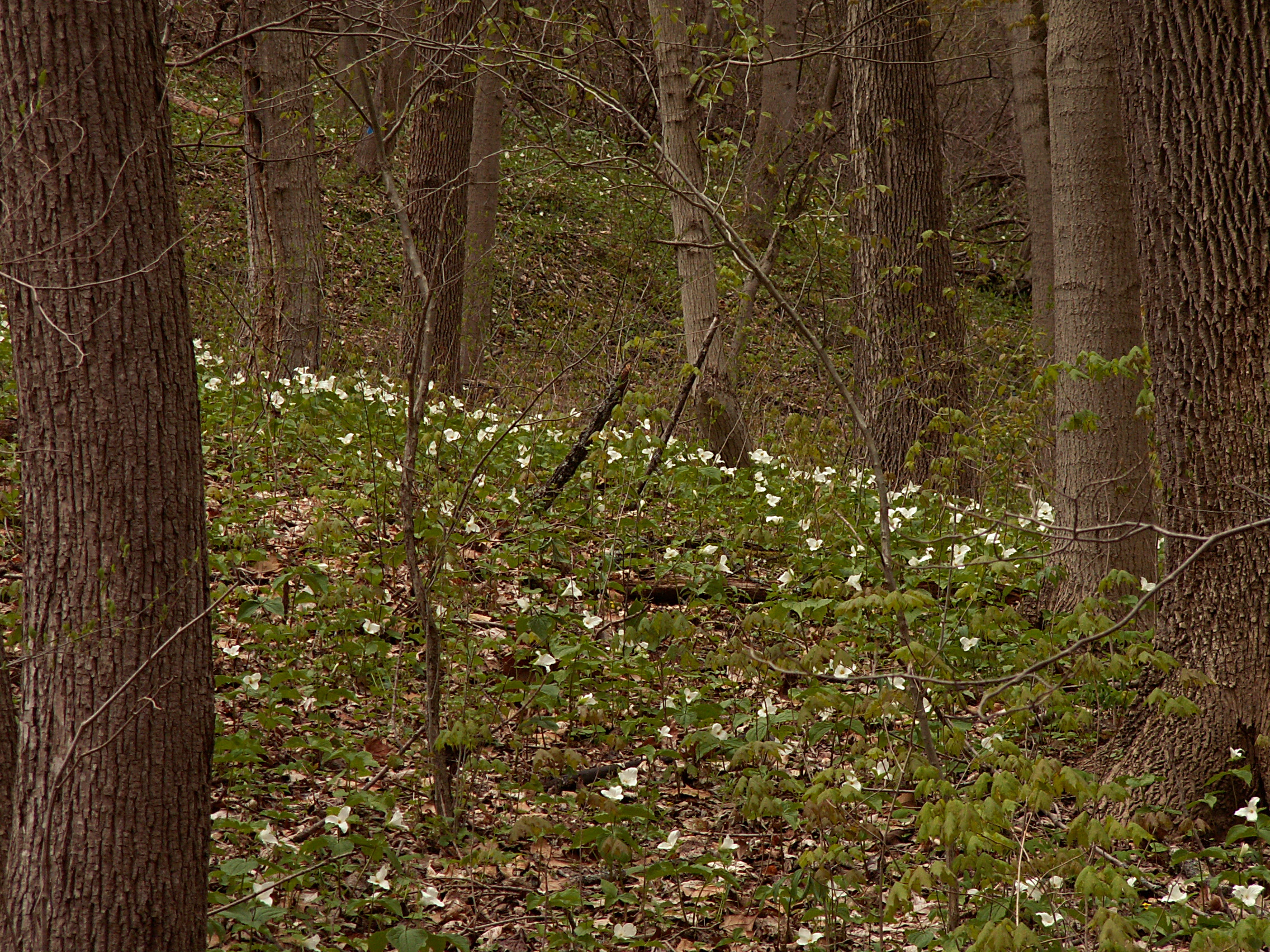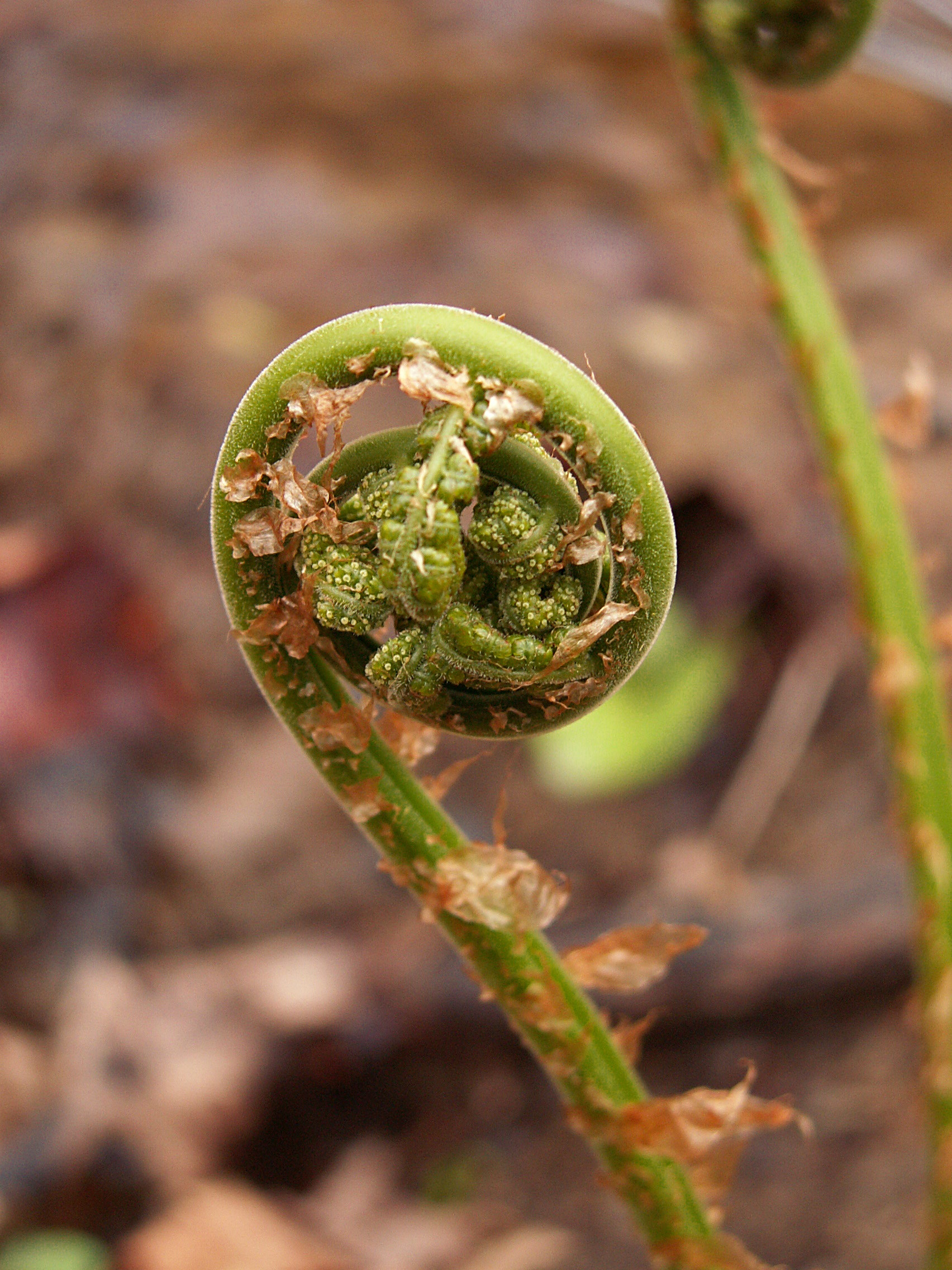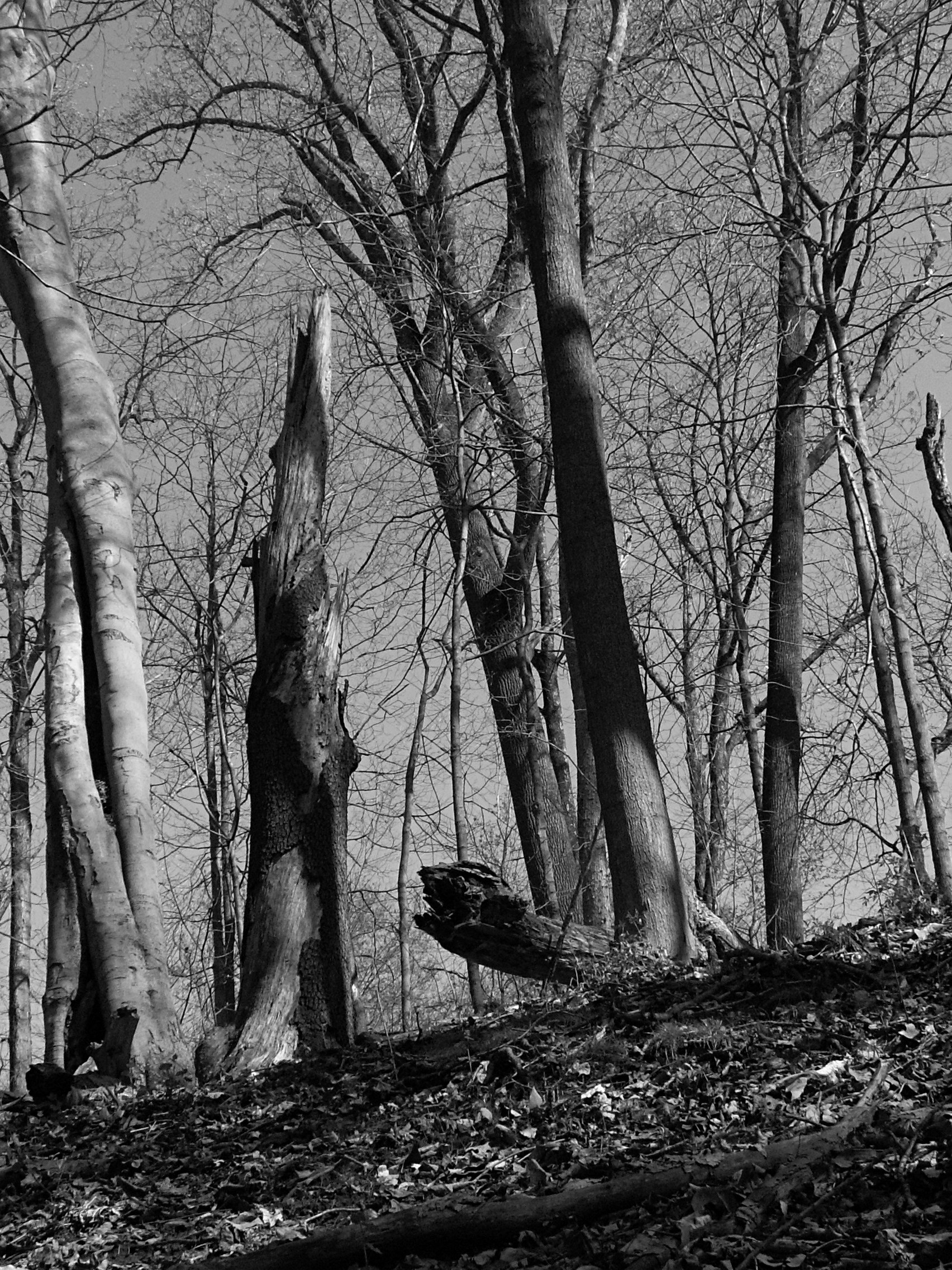
The Trillium Trail in Fox Chapel is named for the vast drifts of trilliums that grow in the woods there. There are two species: the Great White Trillium, Trillium grandiflorum, and the Wake-Robin, Trillium erectum. The Great White is, as you might expect, white (though occasionally pale pink); the Wake-Robin has several color forms, of which red is the usual in most of its range, but white dominates in the Pittsburgh area.
Father Pitt’s best pictures of wildflowers always end up at Flora Pittsburghensis, which you should certainly see right now if you like spring flowers.

Great White Trillium (Trillium grandiflorum).




White, red, pink, and yellow forms of the Wake-Robin (Trillium erectum).











